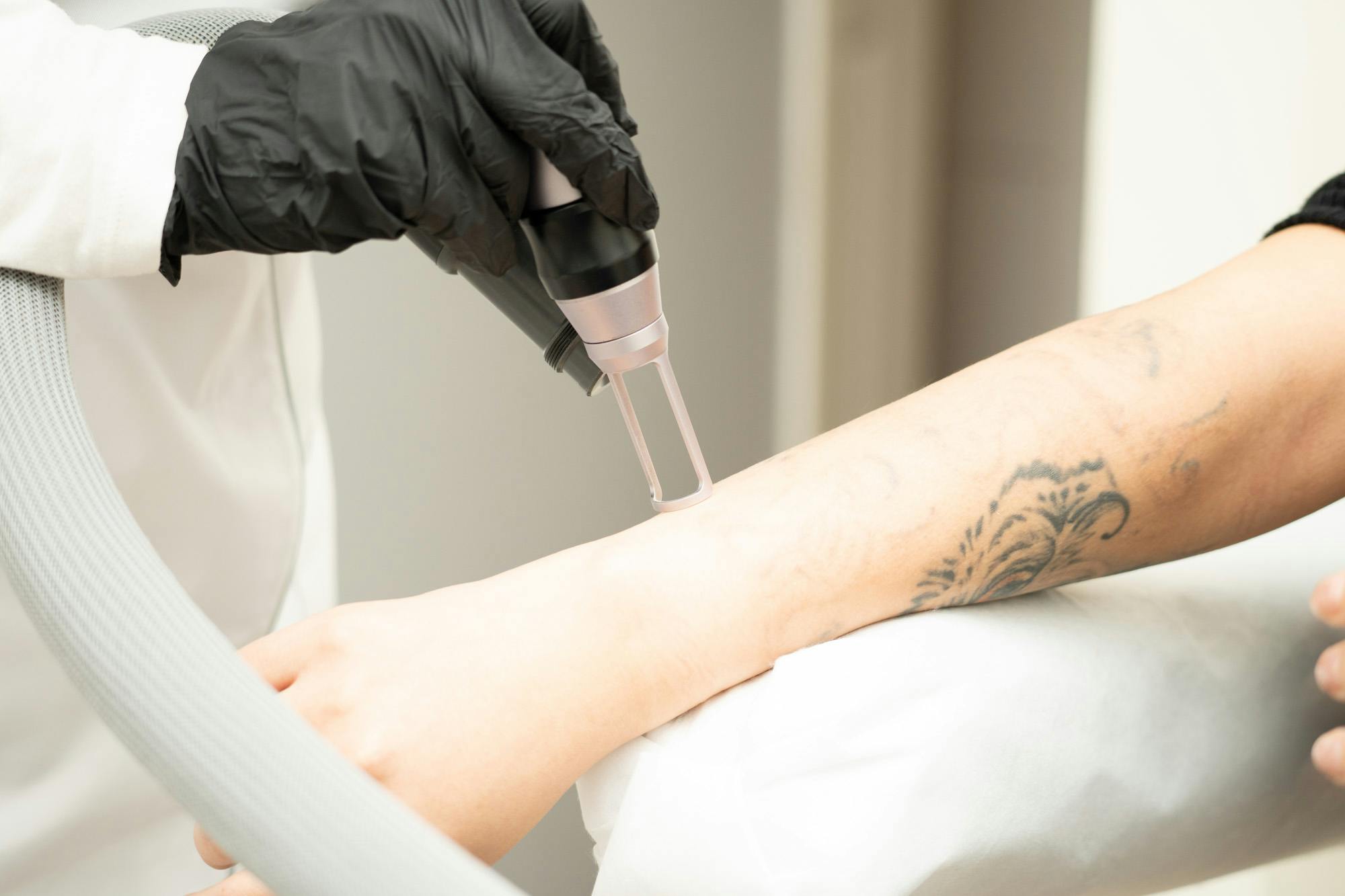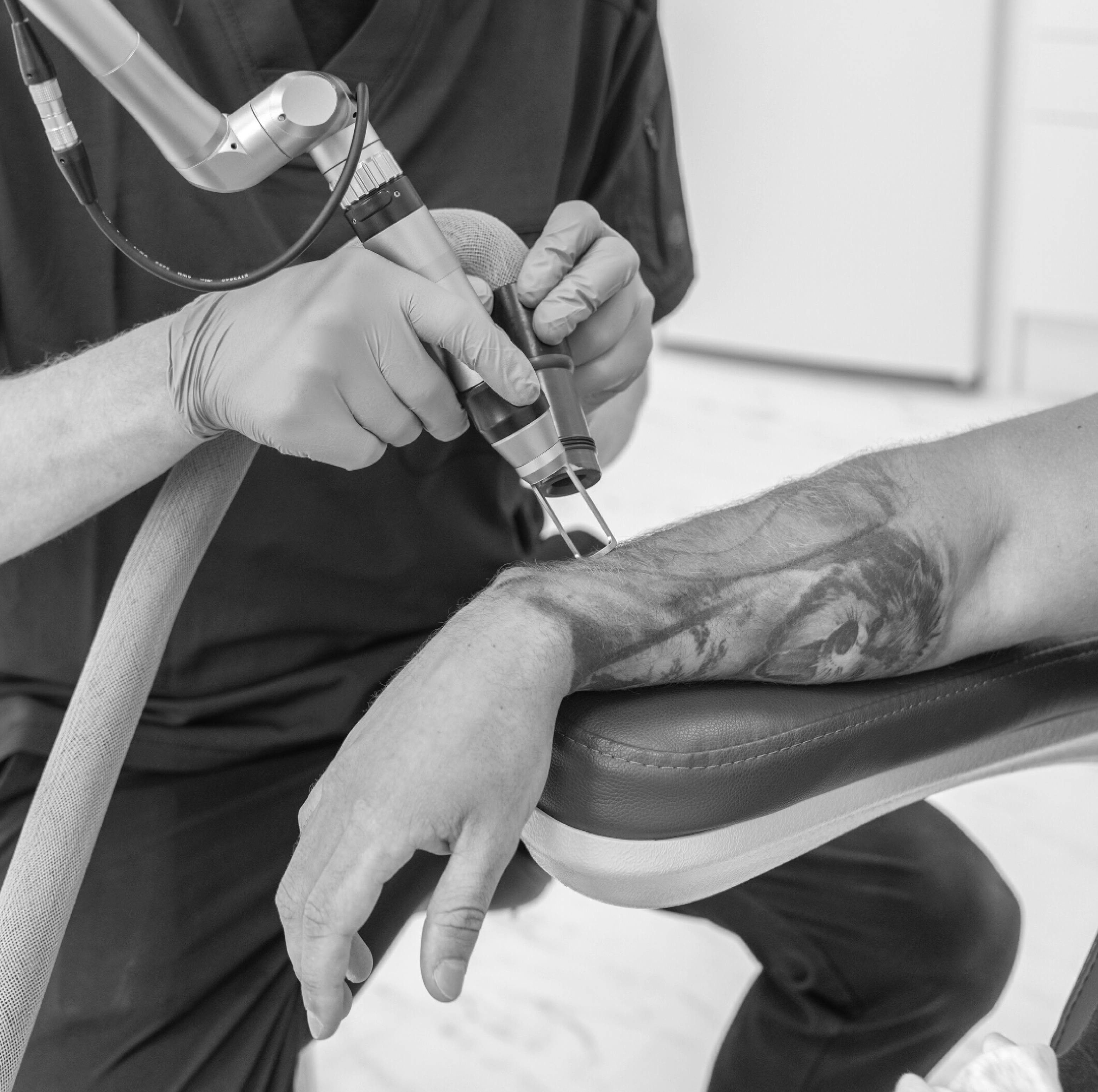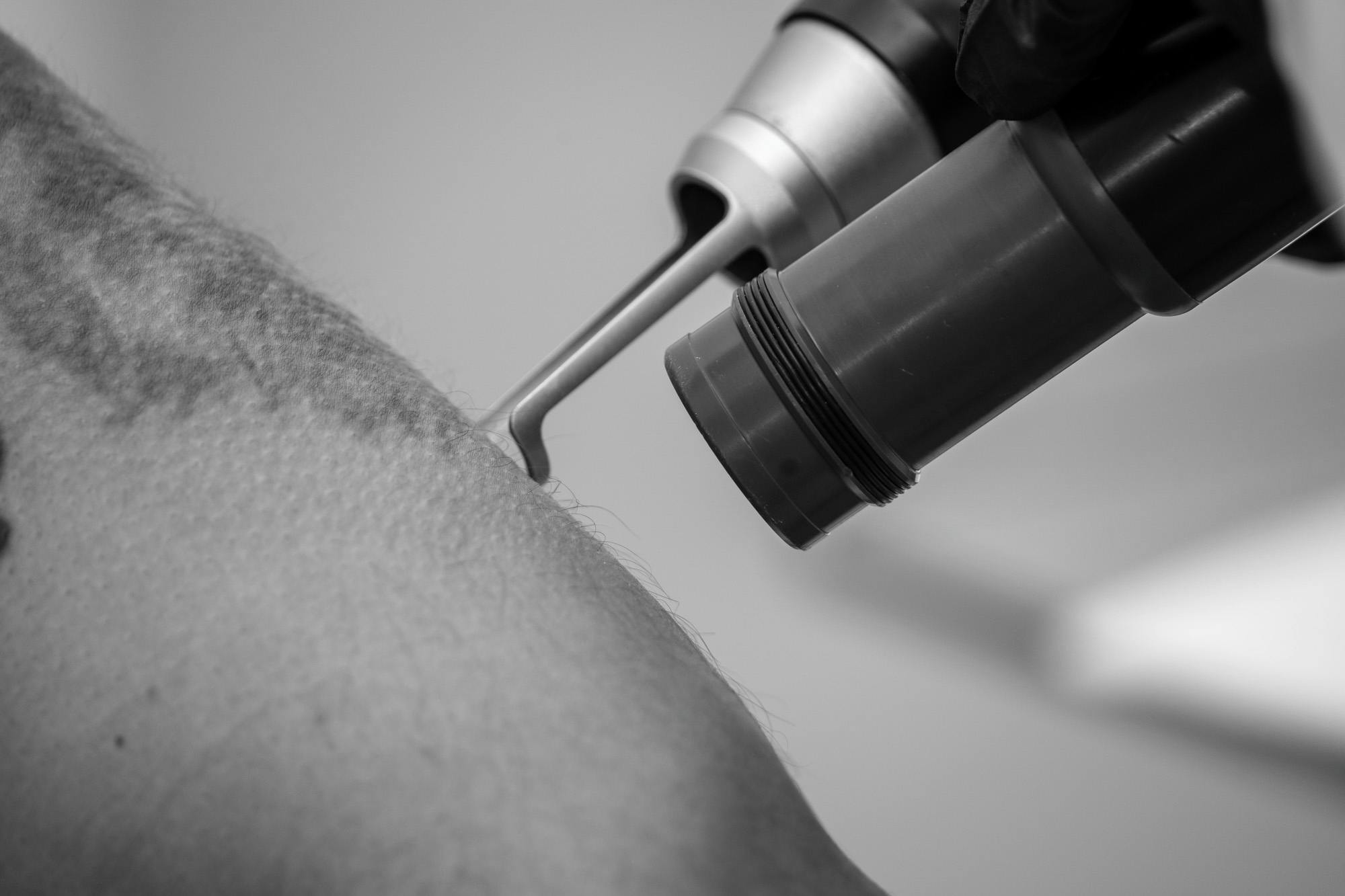
Blogg
What does the skin look like after the treatment?
What does the skin look like after the treatment?
After a treatment, the skin may react in various ways. The most common reactions include redness, swelling, and tenderness. Bruising may also occur on or around the area of your tattoo, and (less commonly) blisters may form on the tattoo.
Swelling, redness, and tenderness usually subside within a few days, while it may take longer for the skin to heal if blisters develop. It is very important not to pick at blisters and scabs and to keep the area clean to avoid the risk of infection or potential scarring. You can use a compress on fluid-filled blisters to protect them from friction caused by clothing and other sources.
To prevent blisters, it is essential to use the provided cooling pack and follow the recommended aftercare instructions. Cooling the area also helps reduce swelling.
Some people may also find that their skin becomes dry and may flake a little after treatment. In such cases, it is beneficial to use a moisturizing, fragrance-free skin cream.
In rare cases, the laser may affect the skin's pigment cells, leading to hyperpigmentation or hypopigmentation, meaning the skin may become darker or lighter in certain areas. The risk of this is generally higher for individuals with darker skin types or those who are sunburned.
Therefore, it is crucial to avoid direct sunlight on the tattoo for 4 weeks before and after treatment and to regularly use sunscreen with a high SPF.
The appearance of the skin after the tattoo is removed largely depends on how the tattoo was applied. If a tattoo is very deep or has healed poorly, there may be scarring in the skin. This can manifest as raised areas in certain spots or a lack of pigment that follows the lines of the tattoo. If we notice any scarring or lack of pigment during the consultation, we will inform you about it.
More blog posts
- Can you remove a tattoo yourself?
- Do you want to remove a tattoo on your wrist?
- When can you see results on the tattoo after a laser treatment?
- Post-treatment care advice: What you should avoid after the treatment
- Can you treat darker skin types?
- Fixed Price for Tattoo Removal Removing
- Numbing Cream Before Treatment
- Older tattoos are easier to fade
- Aftercare cream
- How does the placement of a tattoo affect its removal?




